
Junwoo
2024-08-28 16:26:44
University
Short-form Content Strategy for Media Outlets: 3 Essential Tips for Running a Successful YouTube Channel
🗞️
[Update] Cartoon-Style Newspaper Comics & More Fresh AI Image Styles Are Live! 🗞️🎨
You asked, we delivered: the most-wanted AI image styles have just landed in your timeline!Head to the [Visual] tab > [Stock] > AI Illustration and swipe ...
![[Update] Cartoon-Style Newspaper Comics & More Fresh AI Image Styles Are Live! 🗞️🎨](https://cdn.videostew.com/files/thumb/19635f8ae-7to5sno3b)
🗞️
[Update] Pick Up Where You Left Off – Seamless Long-Form Rendering is Here! 🚀
Until today, Videostew quietly tapped you on the shoulder when your video hit the plan’s length limit. Not anymore—say hello to the new “Project Merge” update! ...
![[Update] Pick Up Where You Left Off – Seamless Long-Form Rendering is Here! 🚀](https://cdn.videostew.com/files/thumb/323962b5e-7td8vjudu)
🗞️
[Update] Your Personal Dictionary (AI Voice Pronunciation Customization)
Your AI voice keeps butchering that one fancy word? Meet the shiny-new User Dictionary—your pronunciation fairy-godmother! 🪄Check out these real-life hacks:Got ...
![[Update] Your Personal Dictionary (AI Voice Pronunciation Customization)](https://cdn.videostew.com/files/thumb/bf4e93e99-7t74wq86j)
🗞️
[Update] Project Favorites Are Here! 🌟
Your go-to My Template just got a turbo-boost: meet Project Bookmarks! ⚡️Hit the gear icon on any project, drop it into your bookmarks bar, and boom—next time y...
![[Update] Project Favorites Are Here! 🌟](https://cdn.videostew.com/files/thumb/079dab158-7t5owv1w8)
🗞️
[Update] Projects & Library Folders: Finally, a Place for Everything!
Wave goodbye to the chaos—folders have landed to keep your projects and library assets neat, tidy, and downright respectable.Project FoldersNeed a spot for that...
![[Update] Projects & Library Folders: Finally, a Place for Everything!](https://cdn.videostew.com/files/thumb/f7774333b-7t0myy5d6)
📣
The 50-Something Real-Estate Broker’s Secret to Cranking Out Blog & YouTube Content at the Same Time (Without Losing His Mind)
These days, even real-estate agents are jumping on YouTube to showcase listings and dish out market insights through slick video content.Meet Mr. Tae-yong Ahn f...
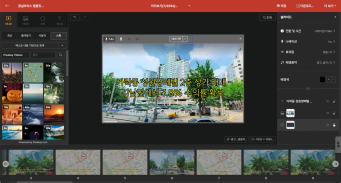
🎓
Turn Your Script into a Video: Practical Content Repurposing Hacks
This post is your no-fluff, real-world playbook for turning the flow of your writing straight into repurposed video content. If video production has always felt...
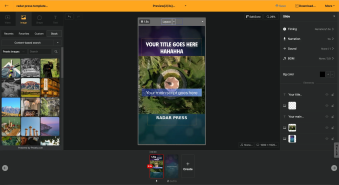
🗞️
[Update] AI Voice Cloning Has Arrived 🎙️✨
1~3분 정도 길이의 목소리 음성 파일로 나만의 TTS를 생성할 수 있는 AI보이스 클로닝 기능이 업데이트되었습니다.AI보이스 > Custom브라우저 상에서 실시간으로 녹음하거나, 미리 녹음된 음성파일을 업로드하여 생성할 수 있습니다.워크스페이스별로 1개의 클로닝 보이스를 생성할 ...
![[Update] AI Voice Cloning Has Arrived 🎙️✨](https://cdn.videostew.com/files/thumb/29d6f68d0-7sb686t98)
Lately, both traditional print and online news outlets are turning their attention to short-form content. This is a strategic move to adapt to the shifting trends in media consumption.
In this post, we'll share the common challenges news organizations face when venturing into video platforms and offer some easy tips to get started.
Five Key Reasons Why News Organizations Are Focusing on Video Platforms like YouTube
Platforms like YouTube don't directly boost the website traffic of news organizations. Nevertheless, there are compelling reasons why these outlets are interested:
Reaching New Audiences
Expanding the reader base targeting younger generations, especially Gen Z and Millennials, is possible.
These groups tend to get their information from social media and video platforms rather than traditional news outlets.
By offering content tailored to their interests and consumption patterns through a YouTube channel, news organizations can capture a young audience that is otherwise difficult to reach with conventional media.
For instance, they can create short and snappy videos to explain complex current affairs or produce news content tied to trendy topics.
Boosting Brand Awareness
Through a presence on various social media platforms like YouTube, Instagram, and TikTok, news organizations can increase their brand exposure.
By creating and distributing content suited to each platform's unique characteristics, they offer more opportunities for audiences to engage with their brand across multiple channels.
For example, on YouTube, you can provide in-depth analysis videos, on Instagram, infographics, and on TikTok, short and impactful news highlights.
This allows for cross-promotion between platforms, ultimately enhancing the overall brand awareness and credibility of the media outlet.
Enhancing Interaction with Readers
Most media websites have a comment service integrated, but it often goes underutilized.
This is because the comment culture on news websites hasn't properly taken root. On the other hand, YouTube presents a different scenario.
YouTube's comment section functions as a lively forum for discussion and exchange of opinions. This is the result of the platform's characteristics combined with user engagement culture.
Particularly, since encouraging comment participation in videos can lead to direct results, it can be used as a platform to actively accept feedback from readers.
This approach goes beyond simply delivering news, proposing a new model of participatory journalism where viewers can create news together.
The vibrant interaction on YouTube can significantly contribute to increasing reader loyalty and building trust in the media outlet.
Cross-Platform Strategy
You can build an overall media ecosystem through synergy across various platforms.
For instance, you can share highlights of in-depth analysis videos from your YouTube channel on Instagram Reels or TikTok, thereby driving traffic to related articles on your main website.
Additionally, you can create YouTube content based on popular articles from your website, providing additional information and analysis.
This cross-platform strategy maximizes the strengths of each platform, strengthens the overall content ecosystem, and ultimately expands the digital presence of the media outlet.
Multimedia Content Creation
Beyond text-based information delivery, it's possible to provide rich and multidimensional information using video, audio, and graphics.
You can create infographic videos that visualize complex data for easy understanding, or deliver vibrant news scenes through on-site reporting videos.
Additionally, you can present various perspectives through expert interviews or panel discussions, and use animation to easily explain abstract concepts.
This multimedia approach enhances readers' understanding and effectively provides in-depth analysis on complex issues.
Three Major Challenges in Operating a News Agency's YouTube Channel
However, there are several difficulties that come with operating a YouTube channel for news agencies.
Through interviews with news agencies that have used Videostew and those participating in support projects by the Korea Press Foundation, we identified four common challenges.
Manpower Issues
Separate from writing articles, there is a need for personnel dedicated to video content production. Particularly for small to medium-sized news agencies, budget constraints make it difficult to hire such specialized staff.
In such cases, related departments may end up taking on additional responsibilities, adding more 'work' to their existing workload, making sustainable operation difficult to expect.
Lack of Technical Expertise
There may be a lack of know-how regarding new technologies like video production and editing. This isn't just about having knowledge of video editing.
Transforming traditional articles into video-friendly scripts and mastering the entire process from editing to distribution can be a daunting barrier for beginners.
For news agencies looking to run a YouTube channel, the technical know-how for video editing generally includes:
Many news organizations, accustomed to text-centric reporting, struggle with developing these new storytelling methods.
Intensified Competition on Video Platforms
Starting a new channel means facing fierce competition with individual creators and major channels. This is a comprehensive challenge beyond mere content competition.
Additionally, without understanding the YouTube algorithm, gaining visibility can be difficult.
Traditional news organizations face challenges in adapting to this new form of competition, particularly in attracting younger audiences.
Three Smart Tips for News Agencies to Kickstart a Video Channel
So far, we've discussed why news agencies are interested in video platforms like YouTube and the common barriers they face when starting a video channel.
Now, let's dive into some smart tips for news agencies to kickstart their video channels in the most efficient way.
Tip 1: Start with Minimal Resources
In the initial stages, it's crucial to use available resources efficiently.
Here, we will focus on case studies of news agencies that are already successfully running stable YouTube or TikTok channels using Videostew, and guide you on how to easily upload your first video with Videostew.
1) First, bring the URL of the already published article to Videostew.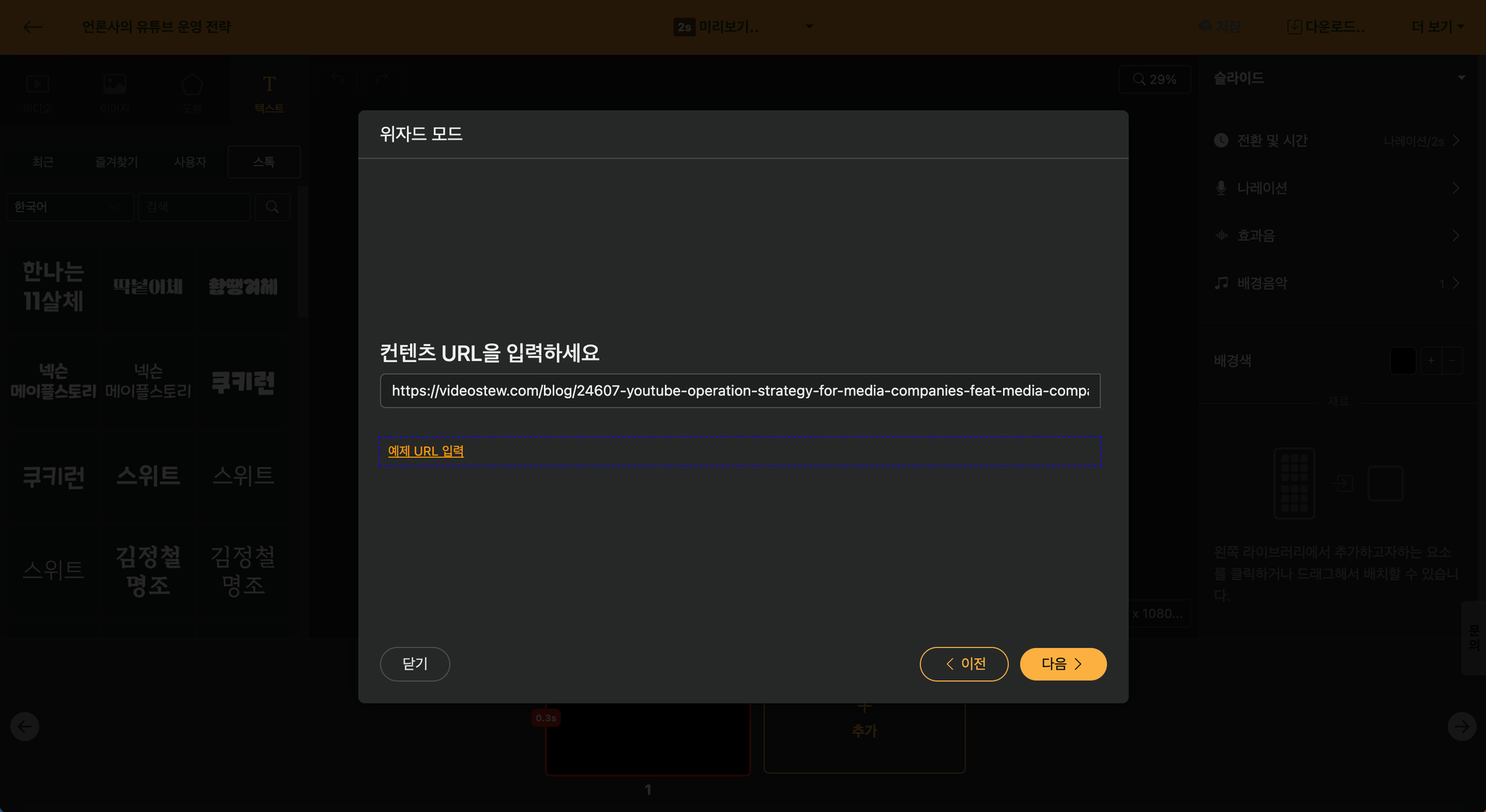
< Start with Videostew's website address option >
Videostew allows you to paste an already published article or bring in the script and images used in the original article just by using the URL.
By using the [Start with Website] menu, you can easily begin the video creation process by entering the document's URL.
2) Use the Refine Text feature to process it into a format suitable for YouTube's grammar.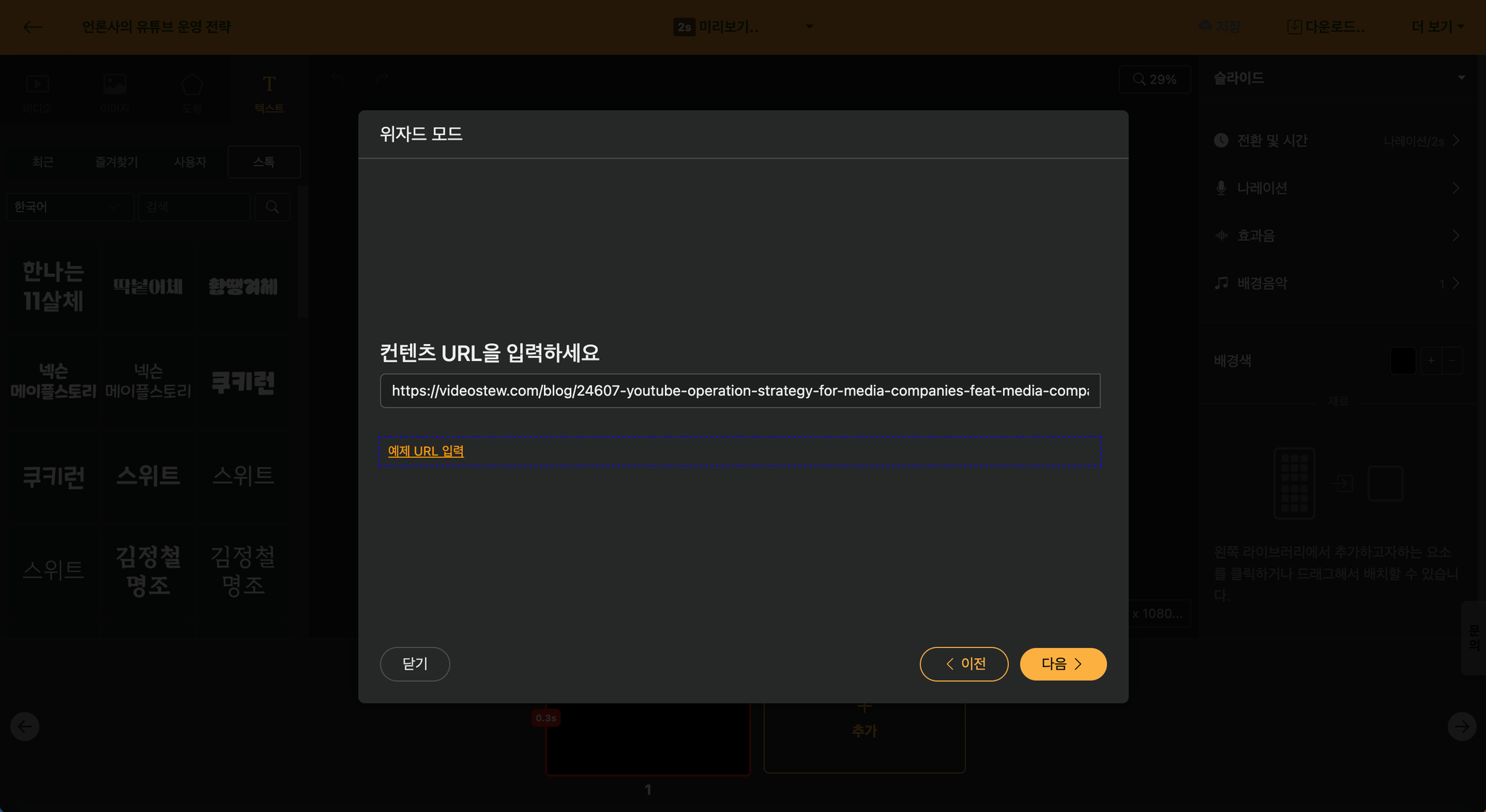
< AI Text Refinement Results >
Generally, articles follow a structured format and are likely written in a formal tone.
However, this style isn't quite suitable for YouTube videos. By using the [Refine Text] feature, you can easily modify the script to place hook points at the front and switch to a conversational style.
Of course, you can make immediate edits to parts you don't like or want to add more to.
3) Upload your existing video materials or images.
< Easily Swap Resources with Drag and Drop >
Videostew automatically matches stock videos or images based on the context of your sentences.
However, for articles, using your own captured images or videos is often much better. It has a positive impact on the video's performance too.
So, if you have videos or images with resolved copyright issues, feel free to upload and easily swap them with a simple drag and drop.
4) Upload to your YouTube channel with a single click.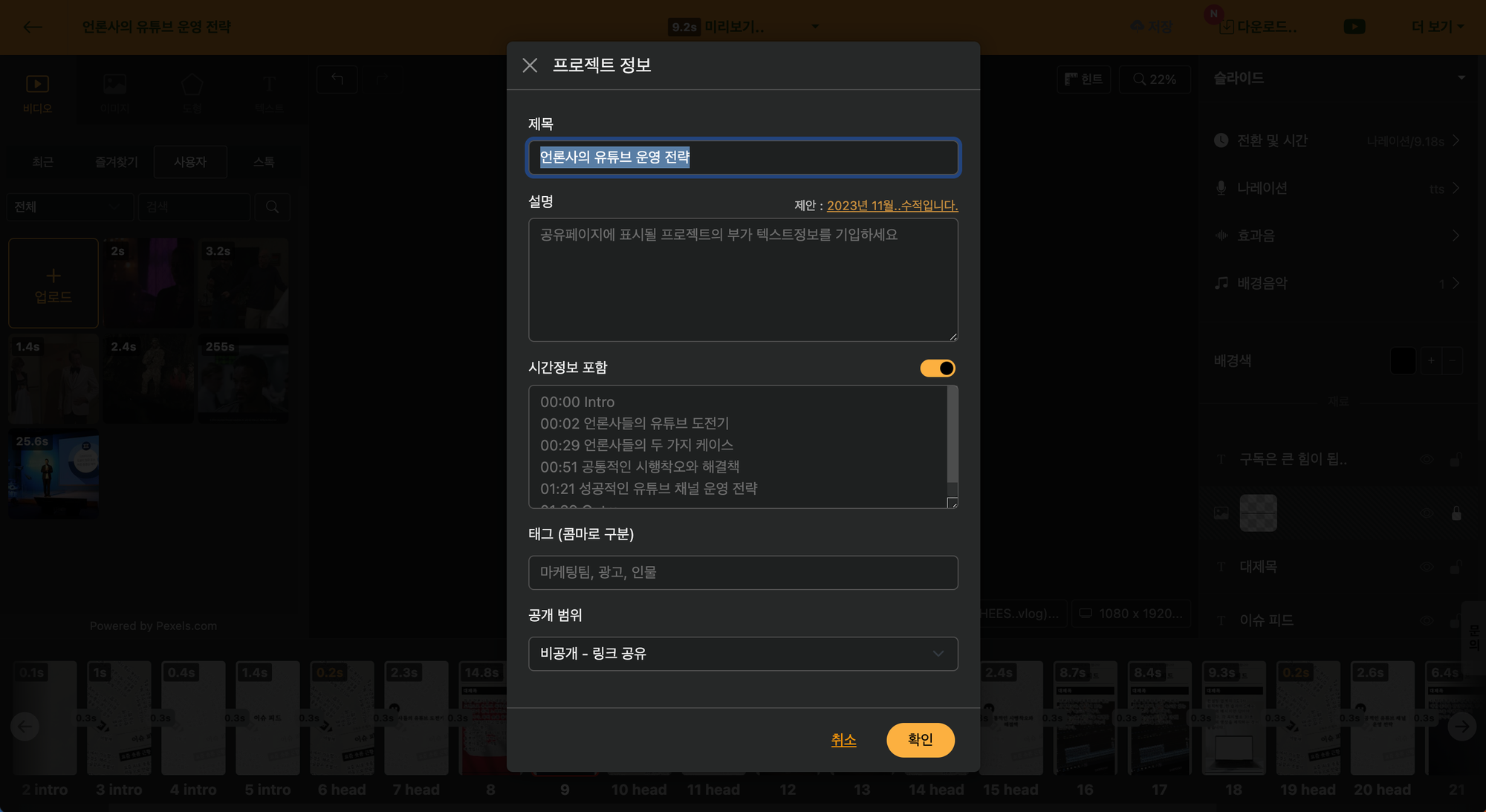
< Automatic Title, Thumbnail, Description, Timestamp Generation >
Once you're done editing, you can publish it to your YouTube channel with just one click.
When uploading a video, you also need to upload specific elements like the video's title, thumbnail, timestamp, and description.
Videostew automatically generates these elements, making video uploads a breeze.
News agencies familiar with Videostew can complete video production for an article in about 10 to 20 minutes. If you want to learn more about how to use it, we recommend watching the Videostew introduction video through this link.
Tip 2: Establish a Consistent and Regular Distribution Schedule
< YouTube's Scheduled Publishing Feature >
As previously mentioned, when you start a YouTube channel (and the same goes for other video platforms), we haven't yet earned the trust of the YouTube algorithm.
To achieve organic exposure and go viral, it's essential to maintain consistent branding and distribute content regularly.
It takes time to increase real subscribers and see results. Therefore, focusing on long-term benefits rather than short-term views and subscriber counts is key to growing your channel without wavering.
Lastly, actively communicating with your audience to gather feedback on your videos and incorporating it to improve content will help you evolve into an optimized format.
Tip 3: Utilizing YouTube Studio
< Average View Rate on YouTube Studio >
Uploading videos that get no response consistently is meaningless. In such cases, continuous efforts to improve the quality of your videos through data analysis are necessary.
Using YouTube Studio, you can identify where viewers are dropping off by looking at metrics like view rate or watch time.
It's important to enhance your content to fit the language of video better and increase view rates.
Additionally, utilizing demographic data to understand your key audience and developing a focused content strategy accordingly is crucial.
Starting is Half the Battle
The challenges that media companies face in running a YouTube channel are undoubtedly formidable.
However, despite these challenges, creating video content in the digital age is no longer optional; it’s becoming a necessity.
Taking that first step is crucial. Waiting for the perfect moment might mean missing out on opportunities. Instead, starting with the resources you currently have and gradually improving is an effective strategy.
Moreover, success in the digital media environment doesn’t happen overnight. But if you don’t start now, the chance for that success may never come.
Even if there are difficulties, now is the time to have the courage to take that first step.
Why not start right now with Videostew? Your first video could be the beginning of a giant leap in leading the future media industry.
Starting is half the battle. The moment you take that first step, you’re already halfway to success.